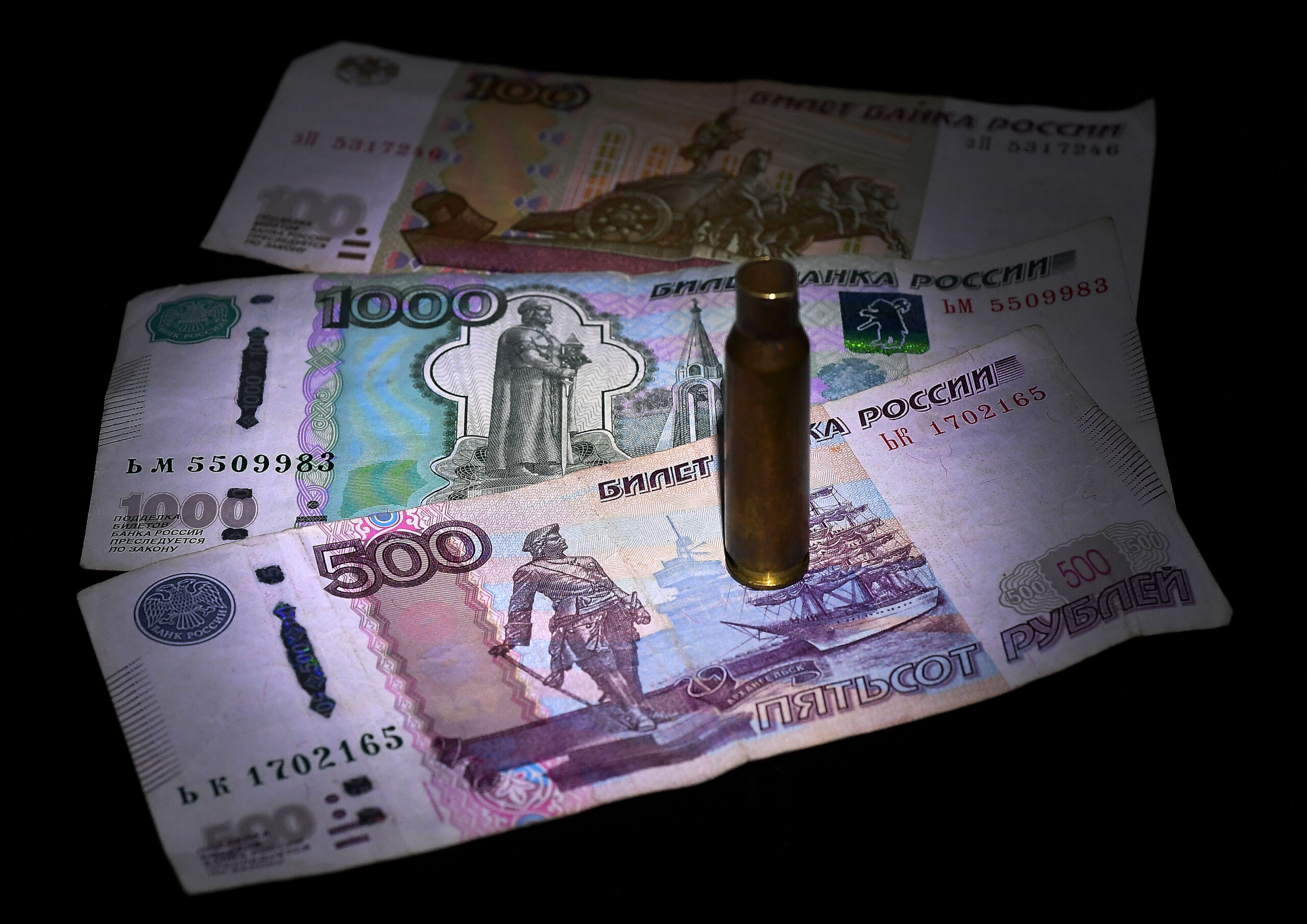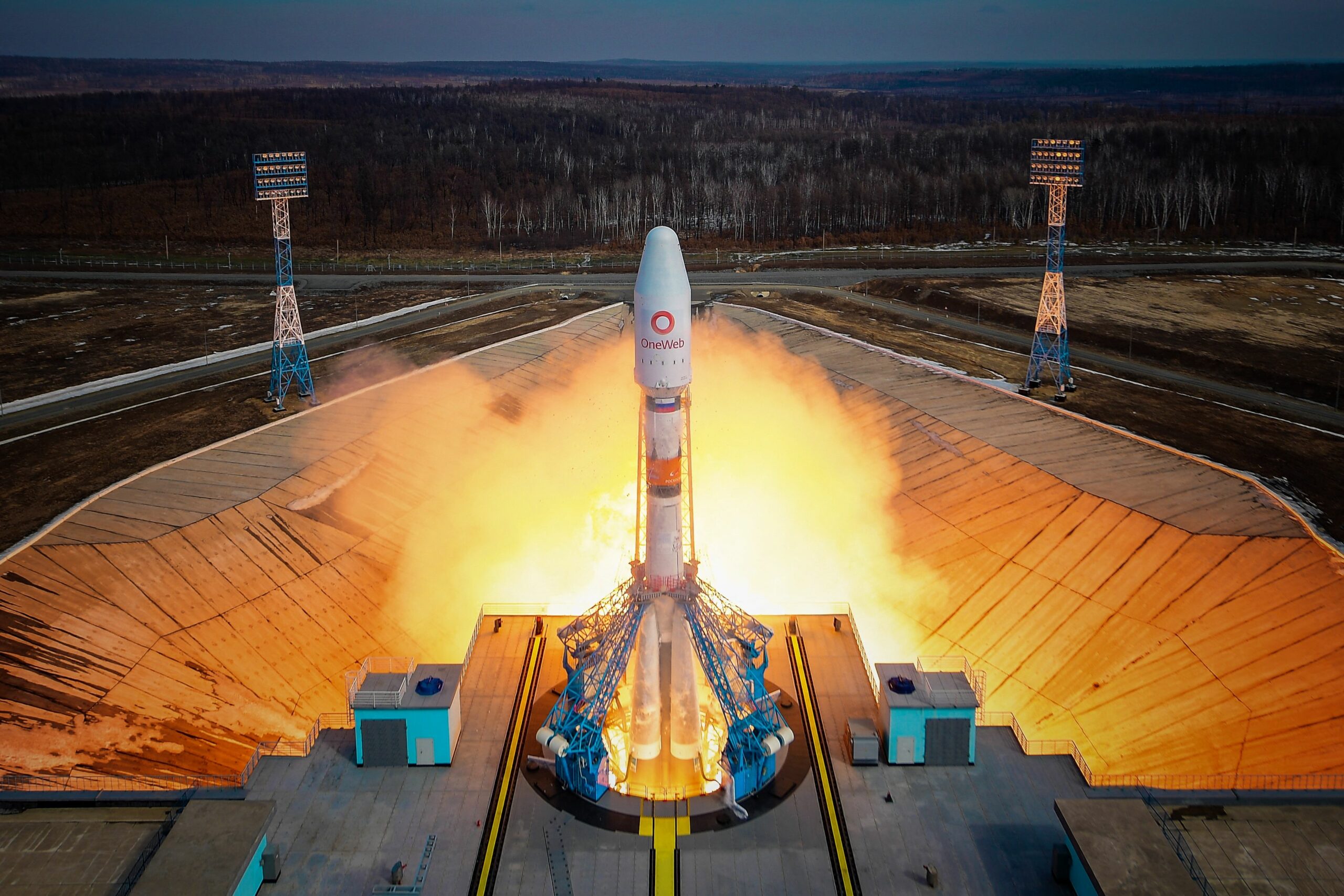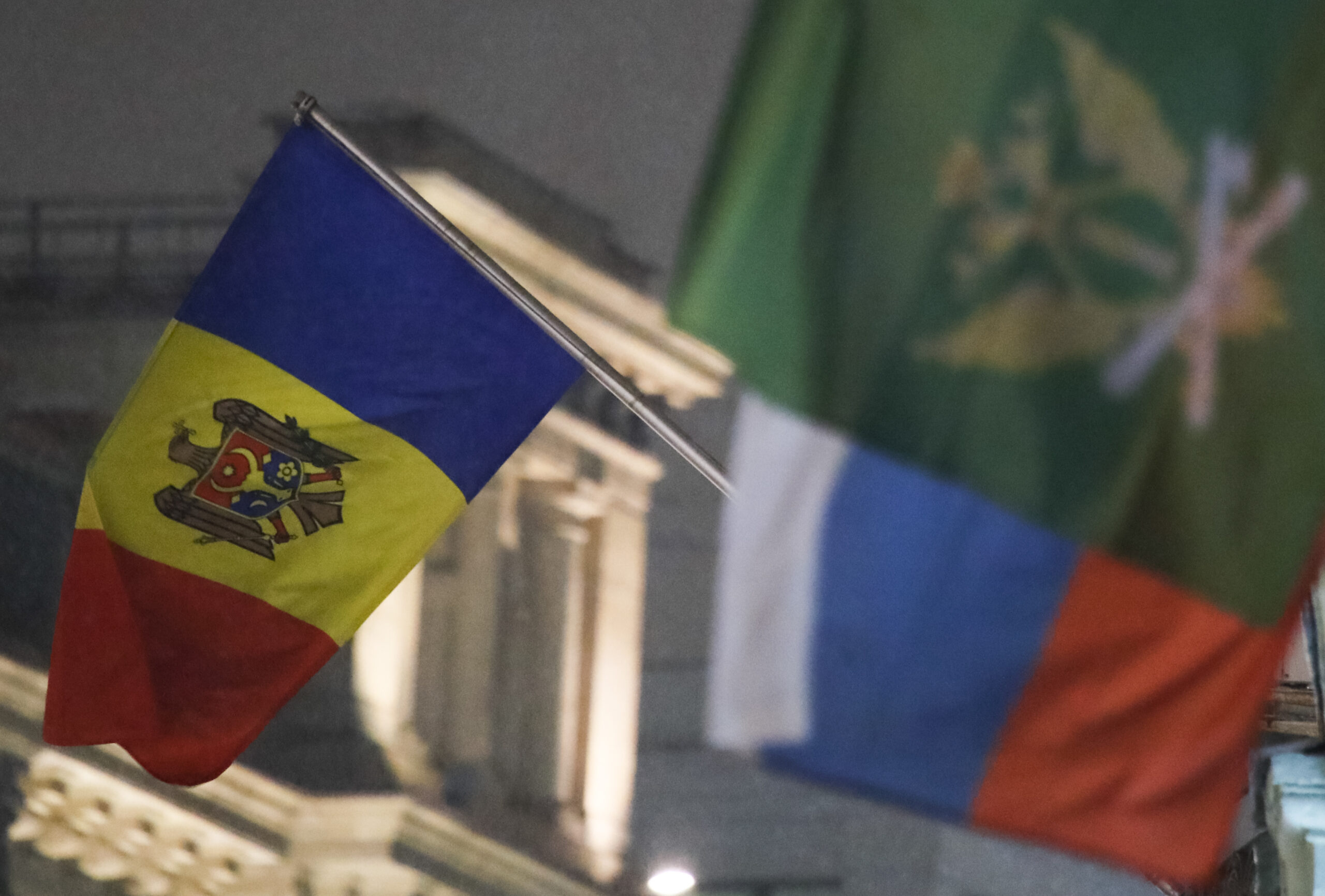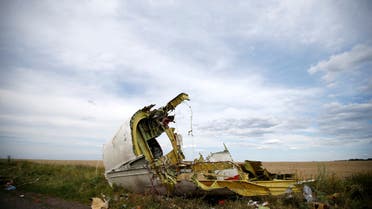It is evening in Bucharest, the capital of Romania, one of NATO’s easternmost members. I am waiting at the edge of Izvor Park in the city center to meet with a young friend who has fled Ukraine. In the backdrop of the park is the Palace of the Parliament, the brutalist architectural crown jewel of the Ceaușescu era, and the heaviest building on earth.
When my friend Pyotr arrives, we sit for beers and share our recent stories; it is late March 2022, just one month since Russia’s “special military operation” in Ukraine began. I have been maneuvering a bureaucratic maze as I try to gain entry into the Russian Federation and the separatist republics of the Donbas; I am awaiting a call back from consulates in Romania and Moldova. Pyotr has just arrived from Kiev by train. A number of his comrades in communist, socialist, and union organizations around Ukraine have been detained.
Recently, the Kononovich brothers, notable Ukrainian communists, had been arrested and disappeared (following their imprisonment, they are now under house arrest). Over a few days of conversation, I learn more from Pyotr than I could ever put into writing; he says to me at one point: “if there is one thing to understand, it is that sovereignty in Ukraine and Eastern Europe has been stolen by the West not through any military invasion or political party, but through the infiltration of Ukrainian civil society by Western interests, NGOs, and right-wing nationalists. Everyone in Ukraine knows that Washington directs this process, whether they support it or not.”
After a week in Bucharest, I head for the consulate in neighboring Moldova, where I have just spent nearly a month reporting on the refugee influx from Ukraine. I have been advised that it is my only option for obtaining a visa to Russia. The divide between pro-Western and pro-Russian civilians is palpable where the Moldovan government is led by Maia Sandu, a graduate of Harvard University’s John F. Kennedy School of Government, and former staffer for the World Bank.
Just as in Ukraine, there is a push in Moldova by pro-West factions to limit public use of the Russian language, despite Russian being the native tongue of hundreds of thousands of Moldovans. One man I speak to there, who is the head of a Ukrainian diaspora NGO, and a former candidate for vice mayor of Chișinău, the capital city, happily informs me that Ukrainians are European, while Russians have “Mongol blood.”
At last, the visa materializes. I leave Moldova and travel to Russia, and then I make my way through Russia to Rostov-on-Don, the last stop on Russian Federation turf before the border with the breakaway Donetsk and Lugansk People’s republics (DPR/LPR). There, in the Donbas, a region that became a mining powerhouse in the USSR, war has been raging for eight years. I am questioned for hours at every border crossing, even in Saint Petersburg, because of my U.S. passport and my tattoos (of which I have many). I am never violated or intimidated, just thoroughly questioned and checked. Mostly, it seems to me, the border officials are looking for swastikas, or evidence of Ukrainian nationalist affiliations, the markers of an individual likely to be hostile to Russia’s advances.
My final crossing into DPR happens in the evening. I emerge from a forest into the capital city of Donetsk. I arrived ready to accept any reality that I witnessed. What I saw was a people who had been through hell, and had adjusted to it, all the while unwavering in their commitment to what they see as a fight for self-determination against the reach of the United States and its vassals, especially NATO.
I see Russian, Soviet, and DPR flags everywhere, along with large signs and billboards: “To Victory,” “We Take Care of Our Own,” “We are Russia.” Victory Day, the anniversary of the defeat of Nazi Germany by Soviet forces on May 9, 1945, perhaps still the most significant day on the Russian calendar, is fast approaching.
I am brought by an official escort to the Central Hotel, about 300 meters from an enormous statue of Lenin that overlooks the main square of Donetsk. There is no active plumbing in the city for about 20-22 hours each day, and no hot water at all; Ukrainian armed forces had blown out the water supply. For the first time in my life, I can hear live artillery going off in relative proximity.
The next morning, I walk to the “fancy” hotel in town, where journalists congregate to have coffee and use fast Wi-Fi (that hotel has since been leveled by Ukrainian munitions; a friend of mine was injured in the attack). I strike up a conversation with a Moscow-based Canadian journalist, who sees on a Donetsk Telegram feed that the Sokol market in the Kirovsky District of Donetsk has just been hit by shelling and that there are fatalities. We rush to a cab and head there.
When we pull up to the marketplace, smoke is everywhere, and many stalls have been burned to a crisp. Shelling continues nearby, close enough to shake the earth beneath our feet. We are brought to a member of the neighborhood safety commission, Gennady Andreevich, who walks us through the wreckage, down side alleys into the food market. An old woman’s body is lying on the ground in a pool of blood. “She came to buy vegetables,” he tells us. “There was also a local teacher who came to buy supplies for his mechanics class; his body was not left in recognizable condition. They never target military positions, you know? Always the markets, where the people go to socialize, to work, to get the things they need to live… or the residential buildings. See? Over there? That is where our neighborhood office is. They hit that last month. My colleague was killed.” He points to a large concrete building.
He is steely, but not without emotion. “There is absolutely no military reason to strike places like this,” he tells us. “They do it to strike fear in our hearts, but it does not work.” This is just my first day, and I am already seeing that the things we’ve been hearing about Donbas are anything but the common NATO refrain of “Kremlin fabrications.”
The following night, a residential building behind a school is hit, and we discover an elderly couple arranging some of the wreckage at the entrance to their building. The woman, who will only give her first name, Elena, is eager to speak with a Western reporter. She tells us that their block has been hit almost weekly for eight years, as they live on the outskirts, near the front. Most of the younger people have abandoned the area, she says, but she has had to stay to care for her bedridden father. “He served as a miner in the Ukrainian army in the USSR. He received many distinguished medals,” she tells us. “They attack us, simply because we did not want to follow a government that betrayed our heritage. We in the Donbas did not support Euromaidan. We are Ukrainian, but we are Russian.” I ask if the Minsk accords, which previously negotiated ceasefires between the separatists and Ukraine, had helped at all. “When Minsk was signed, the shelling here on the edge of the city only got worse.” We pass through their apartment, where their grandchildren left just that morning. She credits an Eastern Orthodox icon painting of Mary for protecting them.
“What would you have to say to anyone reading or watching this in the West?” I ask her.
“I want to repeat to America and to Europe: You send weapons to Ukraine. Ukraine kills… I’m not sure who they consider us to be now, but we are Ukrainian. We all have Ukrainian passports. You aggravate and escalate the situation even more. You should sit at the negotiation table, and not try to solve this by sending more arms.”
I spend some of April, all of May, and some of June in the Donbas. I tour front-line cities, alone and with military transports; I meet with people everywhere: there is Alexei Aybu in Lugansk, a member of “Borotba,” (Struggle), a Ukrainian communist party, who fled Odessa after he barely survived the May 2014 Ukrainian nationalist massacre of more than 40 of his comrades in the trade union building. There is “Aurora,” a Donetsk-based Marxist women’s collective comprised of a mix of locals from the Donbas and refugees from western Ukraine, who have especially harsh words for Western “socialists” who are largely backing their attackers in Kiev.
In Mariupol, we see destruction on an inhuman level. Over and over, the locals there tell us that the Ukrainian Azov battalion, who at the time of my visit are still in the Azovstal bunker, has occupied the city for years with an iron fist; they tell us that when the Russians came nearer, Azov laid waste to the city, not allowing civilians any safe escape corridors, and threatening them with death should they attempt to flee.
Everywhere this narrative is repeated, as is the theme of Kiev as an occupier, and Moscow as the liberator. We see the huge influx of reconstruction and humanitarian aid brought in from Russia, while all Western organizations seem to have abandoned Donbas. I tour the peripheral districts at length; everywhere is another memorial for the dead, a list of names, and stuffed animals to remember the children. It is estimated that between 2014-2022, 15,000 people lost their lives in the Donbas, the vast majority in these extremely poor residential areas, forgotten casualties in a war hidden from the view of the West, who seem to believe that Russian President Vladimir Putin awoke one morning in February and decided he wanted some of Ukraine.
On May 9 (the aforementioned Victory Day of the Soviets over Germany in World War II), I join a caravan of reporters (I’m the only U.S. journalist in sight) to Mellitopol, a city in the Zaporozhye region, next to Mariupol. Mellitopol had also been occupied by Kiev-friendly forces until February 2022, but the city was abandoned by Ukraine without a fight. We have come to witness the festivities for Victory Day; for seven years of what the locals we spoke with there called “occupation” by the Kiev regime, any celebrations of the Soviet victory in World War II have been made illegal, so this will be the first one. Most of us assume that given the instability of the political climate, the curfews, and the closeness of the ongoing battles, it will be a fairly subdued affair.
Instead, at least 10,000 people take the streets, in a procession led by a column of Red Army veterans, many of whom fought in the World War II Battle of Stalingrad. The jubilation is contagious; tears stream down the eyes of people of all ages, including both those who lived through World War II, and those who have only lived through this one. It is an experience unlike any other.
A woman sees me capturing footage of the procession, and beckons me over. She says, “You tell them over there, we are Russian, and we have always been Russian. We defeated fascism then, and we will do it again.”
I asked many people there if they had criticisms of the Russian government, or of Putin’s decisions. There is one refrain that I heard, over and over, maybe best articulated by Svetlana Valkovich, of the aforementioned “Aurora” group: “Putin, yes, made many mistakes. Most of all, he waited far too long to come to help us here in Donbas. We begged Russia to come for years, but at least they have come now.”
This article was produced by Globetrotter.
Fergie Chambers is a freelance writer and Marxist organizer. He can be found on Twitter/Instagram at @jccfergie and at combatliberalism.substack.com.
/cloudfront-ap-southeast-2.images.arcpublishing.com/nzme/7TNHFQW4KNFSFCXD3LCYXWT454.webp)







